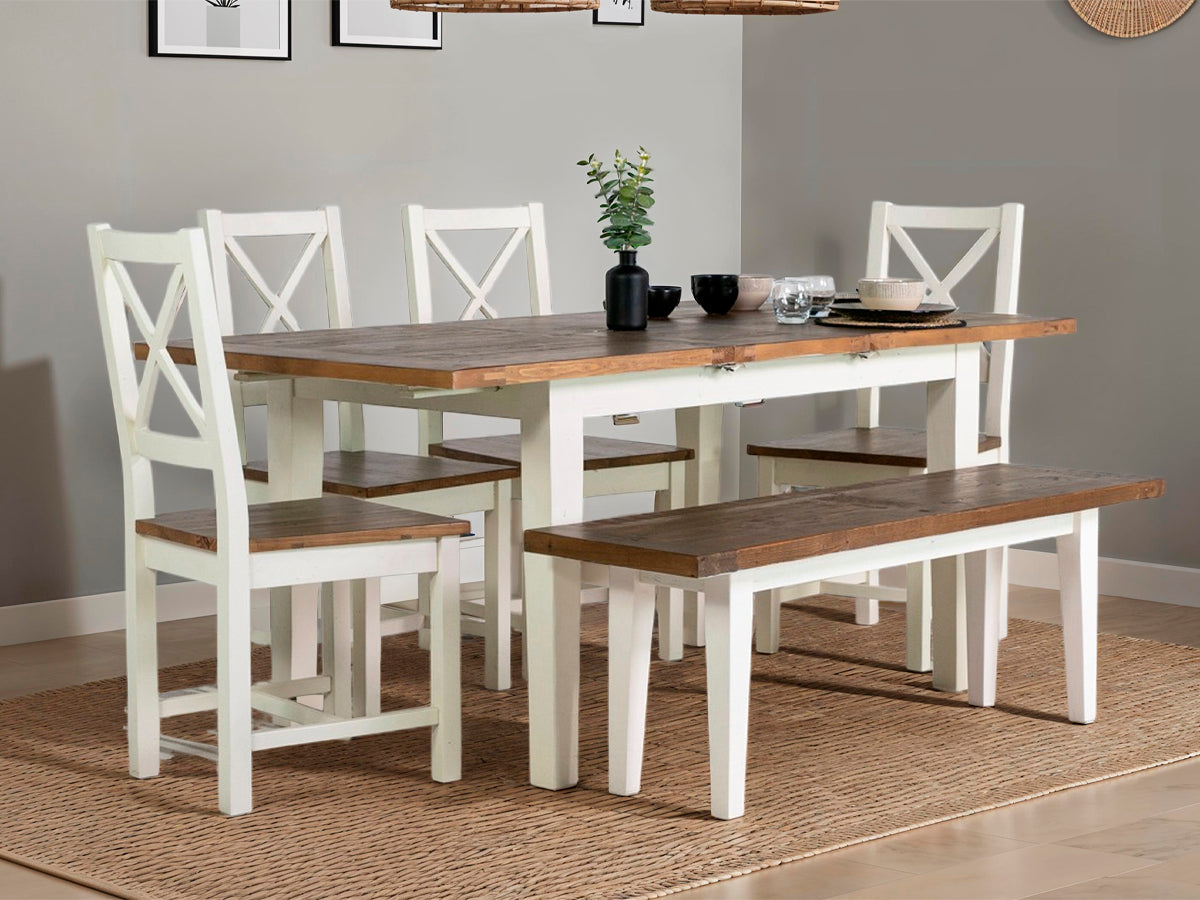-
Repurposing Materials and Minimizing Landfill Contributions:
The fundamental principle underlying reclaimed wood furniture lies in repurposing materials that would otherwise end up in landfills. Salvaged wood from old structures, discarded furniture, or industrial remnants is given a new lease on life through craftsmanship, transforming what could have been waste into functional and aesthetically pleasing furniture.
By choosing reclaimed wood furniture, consumers actively participate in reducing the volume of materials destined for landfills. This not only minimizes the environmental impact of landfill sites but also aligns with the ethos of a circular economy where resources are reused and repurposed, breaking away from the linear model of 'take, make, dispose.'
-
Extending Product Lifespan and Mitigating Disposal:
Reclaimed wood furniture often exhibits superior durability and resilience. Unlike its mass-produced counterparts, which may succumb to wear and tear relatively quickly, reclaimed wood pieces have the inherent strength to withstand the test of time. This longevity directly translates into a reduction in the frequency of disposal and the subsequent need for replacements.
The decision to invest in reclaimed wood furniture, therefore, becomes a proactive step in mitigating the disposal of furniture items. By extending the lifespan of products, consumers contribute to a reduction in the overall waste generated and alleviate the strain on landfill capacities.
-
Embracing the Circular Economy:
The concept of reclaimed wood furniture aligns seamlessly with the principles of the circular economy. In a linear economy, products are discarded after use, contributing to the accumulation of waste in landfills. Reclaimed wood furniture, on the other hand, embodies a cyclical process where materials are continuously repurposed, fostering a closed-loop system.
As consumers opt for reclaimed wood furniture, they actively participate in breaking the cycle of 'take, make, dispose.' This shift towards a circular economy not only reduces the demand for new raw materials but also minimizes the environmental impact associated with the extraction and processing of fresh resources.
-
Encouraging Responsible Consumer Practices:
The choice to invest in reclaimed wood furniture is a testament to responsible consumer practices. It signals a departure from the prevalent "throwaway culture" and encourages a mindset of mindful consumption. By valuing products crafted from reclaimed materials, consumers actively demonstrate an awareness of the environmental implications of their choices and contribute to the reduction of waste generated by disposable consumer goods.
This shift in consumer behaviour has a ripple effect on industries, encouraging them to adopt more sustainable practices. As the demand for reclaimed wood furniture grows, manufacturers are prompted to integrate eco-friendly approaches into their production processes, further perpetuating responsible consumer practices.
-
Supporting Artisanal Craftsmanship and Local Economies:
The creation of reclaimed wood furniture often involves local artisans and craftsmen who specialise in salvaging, restoring, and repurposing materials. This collaboration not only results in unique and bespoke pieces but also supports local economies and the preservation of traditional craftsmanship.
By choosing reclaimed wood furniture, consumers contribute to the economic viability of local artisans. This localized approach to production minimizes the need for extensive transportation of materials, further reducing the carbon footprint associated with the manufacturing process and lowering the environmental impact of long-distance shipping.
-
Fostering Recycling Practices in the Furniture Industry:
The rise in popularity of reclaimed wood furniture serves as a catalyst for change within the furniture industry. Manufacturers, responding to consumer preferences for sustainable options, increasingly incorporate recycling practices into their production processes. This may involve the reclamation of wood, metal, or other materials from various sources, creating a shift towards more responsible and environmentally friendly manufacturing practices.
As the industry embraces recycling and repurposing, it not only reduces its reliance on virgin materials but also contributes to the overall reduction of waste generated by the production of new furniture. This transformative shift holds the potential to reshape the entire landscape of the furniture industry, fostering a more sustainable and circular approach.
In conclusion, the decision to purchase reclaimed wood furniture becomes a profound and tangible way for individuals to actively engage in waste reduction, landfill minimization, and the promotion of recycling practices.
By repurposing materials, extending product lifespans, embracing the circular economy, encouraging responsible consumer practices, supporting local artisans, and fostering recycling initiatives within the industry, consumers play a pivotal role in shaping a more sustainable and environmentally conscious future.
As the momentum towards reclaimed wood furniture continues to grow, it becomes a symbol of a collective commitment to responsible consumption, waste reduction, and the creation of a circular economy. In making choices that extend beyond mere functionality and aesthetics, individuals contribute to a global shift towards a more sustainable and harmonious coexistence with our planet.




















Leave a comment
This site is protected by hCaptcha and the hCaptcha Privacy Policy and Terms of Service apply.